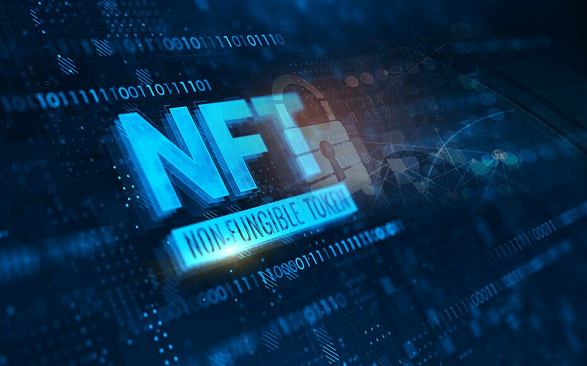The crypto market is renowned for its volatility and cycles, resulting in the existence of bear markets and bull runs. While bear markets entail a period of prolonged price downtrend and negative sentiments in the crypto market, bull runs are mainly characterized by a sustained increase in the prices of cryptoassets.
But when a rally in the price of a certain cryptoasset is accompanied by a sharp decline, the scenario is dubbed a “bull trap.” And of course, this is one trap no crypto trader wants to be caught in given heavy losses are always the consequence. Therefore, distinguishing between a genuine bull run and a deceptive bull trap is crucial for crypto market participants. Hence, this article discusses some key indicators to help you distinguish bull traps from bull runs. It can make or mar your investments.
Understanding a bull run and a bull trap
In the financial markets context, the term bull run is used to describe an extended period of rising digital asset prices and positive investor sentiment. During a crypto market bull run, there is an overarching optimism that encourages buying activity, leading to an upward trend in cryptoasset prices.
This optimistic market sentiment is often driven by favourable economic conditions, positive news, strong fundamentals, and an overall belief that the upward trajectory will persist. Moreover, a bull run is characterized by a series of higher highs and higher lows on price charts, reflecting an extended period of market growth.
Meanwhile, a bull trap is a misleading market situation where a temporary surge in cryptoasset prices creates the illusion of a sustained upward trend. This phenomenon leads investors to believe that a genuine bull run is underway, prompting them to buy or invest.
However, the upward movement is short-lived, and the market subsequently reverses, trapping those who entered during the false rally. In other words, the reversal catches market participants off guard, resulting in losses for those who entered the market during the bull trap.
Notably, bull traps often occur in volatile markets and can be fueled by factors such as speculative trading, sudden bursts of positive news, or technical indicators that misinform traders. Bull traps could also occur as a result of market manipulations from the big players.
Read also: What do ‘bull’ and ‘bear’ markets mean and how do you identify them?
Key indicators of bull trap and bull run
Distinguishing between a genuine bull run and a bull trap requires careful analysis and consideration of various market indicators and conditions. Below are some of the key indicators of bull markets and warning signals of bull traps:
- Trading volume
The volume of cryptoassets traded on exchanges is something every market participant should always check to decode whether the market trend is actually bullish or just a trap.
Very importantly, bull runs are always accompanied by increasing trading volumes, reflecting strong investor participation and conviction. The surge in trading volume validates the upward price movements observed in the market. Increasing trading volume also suggests that a broad set of participants is actively buying, supporting the positive momentum.
But in a bull trap, the surge in prices of cryptoassets is not accompanied by a corresponding increase in trading volume, indicating a lack of widespread investor conviction. This implies that if a sudden price increase occurs with low trading volume, it could be a warning sign of a potential bull trap.
Read also: Is the next bitcoin halving in 2024 going to be the magic wand for a bullish run?
- Price action
To distinguish a bull trap from a bull run, crypto traders can also study the price movement of assets. Notably, the price of cryptocurrencies often rises gradually and sustainably over an extended period in a bull market and it is often accompanied by positive fundamentals. The formation of higher highs and higher lows over time further indicates a genuine bullish trend.
On the other hand, price actions of cryptoassets in a bull trap are typically sudden, sharp and disproportionate to the overall market conditions. Simply put, bull traps are characterized by abrupt surges in the price of cryptocurrencies, indicating a lack of sustainability.
To further detect a bull trap, the price surge would tend to lack a clear catalyst or fundamental reason, with market participants unable to identify a legitimate driver for the sudden increase. Also, the upward movement in bull traps often involves a limited number of participants, such as a specific group of traders or market makers, rather than widespread market enthusiasm.
In addition, the formation of price patterns such as “double tops” or “head and shoulders” may indicate a potential bull trap. Chart patterns such as inverted cup and handle formations may also signal a potential bearish reversal or bull trap, especially if they occur after a rapid price increase.
- Market sentiment
A sudden surge in positive sentiment around a cryptoasset without clear fundamental and technical reasons may be a warning sign of a bull trap. Meaning, that if there is sudden hype for a project that is disproportionate to the broader market fundamentals, it could be a pointer of a bull trap.
In contrast, a positive sentiment for a crypto project, reflected in news, developments, partnerships and advancements in the underlying technology of the project, tends to portray a potential bull run.
- Divergence in Indicators
The divergence between price movements and technical indicators can also help market participants distinguish a potential bull run from a bull trap. If the price of a certain cryptoasset is rising while indicators —such as the Relative Strength Index (RSI) and Moving Averages (MA)— show weakness, it may indicate a potential bull trap.
Conclusion
Bull traps and bull runs will always occur in the crypto market, emphasizing the need for market participants to learn how both work and understand their key pointers such as the behavior of technical indicators, trading volume, price pattern, market sentiment, etc. With this knowledge, one can easily distinguish a bull trap from a bull run in the crypto market.
Read also: What is bitcoin halving and why does it matter to crypto investors?
Image source: Finbold
Credit: Ndianabasi Tom A crypto journalist and content writer who has been talking about cryptocurrency and blockchain technology since 2018, Ndianabasi is a Writer at Crypto Asset Buyer (CAB).
Discover more from Crypto Asset Buyer
Subscribe to get the latest posts sent to your email.




